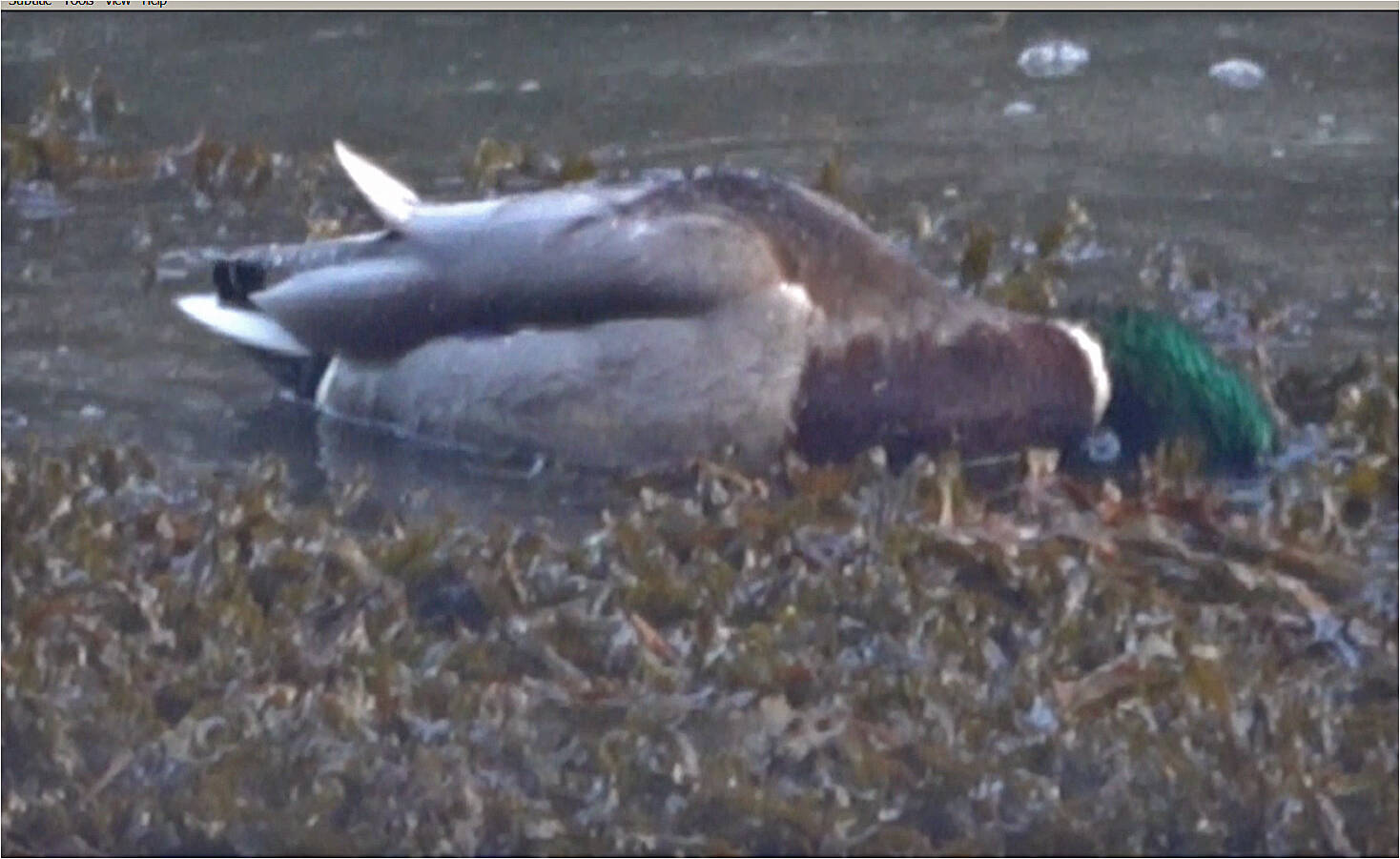Mallards are omnivores, eating seeds, little invertebrates, an occasional tiny fish, and whatnot. Recent midwinter observations at North Tee Harbor documented them grazing on rockweed, a perennial brown alga that occurs in dense stands in the rocky intertidal zone. They were not just stripping off a layer of micro-organisms or tiny invertebrates; they were taking small bites of the algal fronds. That led us to inquire about the nutritional value of rockweed.
Rockweeds (in the genus Fucus) are a diverse group of over 60 species and the nutrient content varies greatly among those species. Our local species, according to helpful folks at NOAA, is Fucus distichus subspecies evanescens (although it has had other names too), but detailed nutrient contents for our local species are not readily available.
In general, the nutritional properties of Fucus have been quite well studied, particularly with respect to medicinal uses for humans. Water is typically the main component of Fucus fronds. Macronutrient content is highly variable, showing large changes with growing conditions and season, although fat content is typically rather low. Protein content is not very high, but it is generally a bit better than other vegetable sources such as peas, and the individual amino acids in the proteins may have a variety of metabolic functions. Carbohydrates are the principal macronutrients, providing some digestible material but not a lot of calories, and mostly providing fiber. The variety of fiber molecules may have lots of useful functions such as stimulating the growth of helpful microbiota, reducing inflammation, activity against tumors and viruses, and many others…at least in humans. And then there are micronutrients such as vitamins and iodine, which also show huge seasonal (e.g. as much as five-fold for some vitamins) and other environmental variation. However, what mallards actually get of all that is not known, it seems.
Research has shown, furthermore, that rockweed of our local species produces protective compounds when grazed…herbivory by snails and presumably also mallards induces these defenses, somehow transmitting the signal from the site of injury to other parts of the plant. So the very act of mallard grazing could induce reactions that make the fronds less palatable and diminish the value of grazing. And that contributes to the already great variation in nutritional value.
So why write about something so little known? Perhaps to call attention to the lack of adequate information on nutritional needs and resource availability for mallards or other waterbirds. Perhaps to emphasize the importance of strong variation due to season and growth conditions and other factors, which may be critical to understanding what the observed mallards might have been getting from nibbling on Fucus. Could they be seeking particular nutrients at certain times? Much remains to be learned.
And on another topic: We’ve known for several decades that terrestrial flowering plants “talk” to each other by sending airborne chemical signals. A plant wounded by herbivores can emit a cocktail of chemicals that tell other plants of danger, so to get the defenses ready. But only very recently (published in January 2024) have researchers found out how the signal is “heard” by the as-yet-undamaged plants. In carefully controlled lab conditions, they measured the signal given by wounded plants and monitored in detail the response of nearby intact plants, using Arabidopsis, a type of cress often used for lab experiments. It turns out that particular cells on the leaves of the receivers capture the signal. Around each stomate or pore on the leaf surface are big guard cells that regulate the size of the opening for passage of gases (oxygen, carbon dioxide, and any other gases in the air). These guard cells respond to certain chemical compounds in the aerial signal by generating an internal calcium signal, which is then picked up the inner leaf tissues that gear up their own defensive compounds. Voila!
Calcium signaling is a common way the animal cells communicate, too. It’s involved in muscle contraction, cell growth, nerve transmissions, memory, and many other functions. And it would not be surprising if some airborne messages of animals are converted into calcium signals too.
• Mary F. Willson is a retired professor of ecology. “On The Trails” appears every Wednesday in the Juneau Empire. Local naturalist/photographer Bob Armstrong provided the observations, some references, and video of mallards feeding on rockweed in North Tee Harbor.

